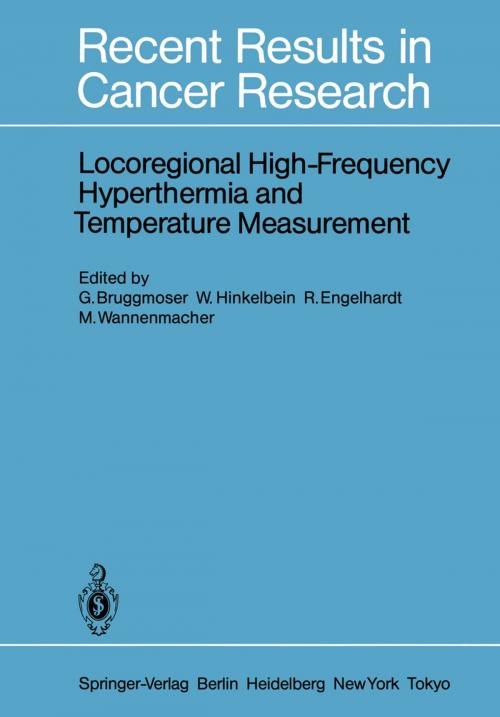Locoregional High-Frequency Hyperthermia and Temperature Measurement
Nonfiction, Health & Well Being, Medical, Specialties, Radiology & Nuclear Medicine, Oncology| Author: | ISBN: | 9783642825309 | |
| Publisher: | Springer Berlin Heidelberg | Publication: | December 6, 2012 |
| Imprint: | Springer | Language: | English |
| Author: | |
| ISBN: | 9783642825309 |
| Publisher: | Springer Berlin Heidelberg |
| Publication: | December 6, 2012 |
| Imprint: | Springer |
| Language: | English |
The present challenge in the treatment of tumors is to reduce the number of patients that still die as a result of primary tumors. Today, the percentage of such deaths remains high at 30%, even when all the common therapeutic methods, namely surgery, radiotherapy, and chemotherapy, are applied. In order to reduce this percentage, new types of radiation sources with a higher linear energy transfer have been intro duced, such as neutrons and pions. Fractionation patterns have been modified and radiosensitizers have been applied to in crease biological efficiency. Studies of the combined application of chemotherapy and radiotherapy have been made to find the best therapeutic effect. In the early 1970s biological findings confirmed the effect of hyperthermia on tumor cells. The first clinical studies on hyper thermia treatment demonstrated that it resulted in better local tumor control. Further application of this treatment modality showed that hyperthermia should be used in addition to radio therapy and chemotherapy. Despite these encouraging results, hyperthermia has not been introduced into common clinical use, due primarily to technical problems. There are a number of methods of transferring heat into tumors; however, with regard to physical conditions, an op timum method has not yet been found. One of the reasons is that up to now we have had no reliable method of obtaining thermal mapping of all parts of the human body. Such measurements are required not only for dosimetric purposes but also for the regula tion of a hyperthermic system.
The present challenge in the treatment of tumors is to reduce the number of patients that still die as a result of primary tumors. Today, the percentage of such deaths remains high at 30%, even when all the common therapeutic methods, namely surgery, radiotherapy, and chemotherapy, are applied. In order to reduce this percentage, new types of radiation sources with a higher linear energy transfer have been intro duced, such as neutrons and pions. Fractionation patterns have been modified and radiosensitizers have been applied to in crease biological efficiency. Studies of the combined application of chemotherapy and radiotherapy have been made to find the best therapeutic effect. In the early 1970s biological findings confirmed the effect of hyperthermia on tumor cells. The first clinical studies on hyper thermia treatment demonstrated that it resulted in better local tumor control. Further application of this treatment modality showed that hyperthermia should be used in addition to radio therapy and chemotherapy. Despite these encouraging results, hyperthermia has not been introduced into common clinical use, due primarily to technical problems. There are a number of methods of transferring heat into tumors; however, with regard to physical conditions, an op timum method has not yet been found. One of the reasons is that up to now we have had no reliable method of obtaining thermal mapping of all parts of the human body. Such measurements are required not only for dosimetric purposes but also for the regula tion of a hyperthermic system.















